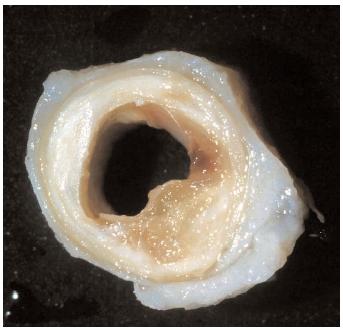Heart disease happens when the arteries feeding the heart become infiltrated with plaques – and these plaques happen to contain fat, cholesterol, white blood cells. If the plaque builds up slowly the flow of blood to the heart diminishes and people develop chest pain or angina. If that plaque ruptures and causes the artery to close- that is a heart attack or myocardial infarction.

Plaque formation was thought to be because of a person’s diet – since the plaques had high levels of fat and cholesterol, it was thought that a diet that was low in fat and cholesterol would minimize a person’s risk of heart disease. Sometimes that is true- but not always- as the French have shown us- with a diet high in fat and cholesterol and one of the lowest levels of heart disease in the western world.
It turns out the instigator of plaque formation are the lipo-proteins that carry cholesterol and triglycerides. Think of LDL, HDL, VLDL, and IDL (low density lipoprotein, high density lipoprotein, very low density lipoprotein, and intermediate density lipoproteins) as boxcars that carry cholesterol and triglycerides. Those lipoproteins set off an inflammatory reaction in the blood vessel (they become oxidized) and that leads to plaque formation. The more of those proteins a person has, the higher the likelihood that they will develop heart disease.
Think of LDL as “lousy.” The HDL levels are associated with fewer tendencies for heart disease – but they still can cause inflammation of the artery, and a problem. Hence, artificially raising HDL levels causes more issues with heart disease (as was recently discovered in the niacin trials). HDL levels are seen in people who have more omega-3 fatty acids in their diets, but increasing their levels is still harmful.
The more lipoproteins your body makes the higher incidence of heart disease you will have.
It has only been recently that science has recognized that one must measure the lipoproteins directly. Not indirectly by measuring cholesterol – as the laboratories do today. In the recent article from the Journal of the American Medical Association, they measured LDL-cholesterol in people placed on diets rich in soy proteins, fiber, and walnuts – showing a decrease in the LDL-cholesterol – a classic mistake. LDL-cholesterol does not measure the total number of lipoproteins. The amount of lipoproteins one has depends on how much cholesterol and triglycerides the lipoproteins have to carry. If a person has a lot of cholesterol and/or triglycerides in the blood the body will make more lipoproteins. If you have too many, those lipoproteins will get into the wall of the artery and lay down their cholesterol and triglycerides (which are fats).
If you have a lot of triglycerides it will bump off the cholesterol and you will make more proteins to carry the triglycerides. Your cholesterol level will be low, but your number of lipoproteins will be high- and thus, even with low cholesterol you will have a high incidence of heart disease. This explains some of the seemingly contradictory data of people who had low LDL-cholesterol levels but a higher incidence of heart disease – when that blood was looked at later they were found to have a high level of the LDL proteins.
We still don’t understand everything about the biology of the formation of plaque but we do know this: genetics determines most of the level of cholesterol, and if your level is high reducing it with medication will reduce the incidence of heart attacks and strokes. If you have genetically high triglyceride levels, the same applies.
In terms of diet- dietary cholesterol has minimal impact on blood cholesterol. Triglyceride level can be greatly impacted by diet – however.
To reduce triglycerides in your diet, here are some suggestions:

* Eat fewer calories if you are overweight. Excess calories are converted into triglycerides and stored as fat.
* Avoid trans fats, found in some fried foods and commercial baked products.
* Replace saturated fat (found in animal fat and some tropical oils) for mono-unsaturated fat (found in olive/canola/peanut oils, etc.).
* Consume at least 2 servings of cold water fish each week, such as salmon, mackerel, tuna, lake trout, herring, and sardines (all of which are high in omega-3-fatty acid). *Include into your diet other foods high in omega-3 fatty acid, such as ground/milled flaxseed, walnuts, almonds, canola or soybean oil, etc.
* Avoid refined foods and foods that contain sugar (such as white flour, desserts, candy, juices, fruit drinks).
* Choose carbohydrates that have 2 grams fiber or more per serving, such as brown rice, whole wheat bread, and whole grain cereals.
* Consume at least 2-3 cups of vegetables and 1 cup of fruit each day.
* Follow your doctor’s advice regarding alcohol. Alcohol increases triglyceride levels for some individuals. If you have high triglycerides and do consume alcohol (such as red wine), it is recommended to limit intake to 5 ounces per day or limit it entirely.
* Exercise to burn excess calories, aiming for at least 30 minutes of physical activity on most days of the week.
Medications
People who have high triglycerides and low HDL or high LDL levels may require medications as well as diet modifications. Patients with triglycerides in the very high range (over 500 mg/dL) generally will require medications, because triglyceride levels this high may cause an acute inflammation of the pancreas.
